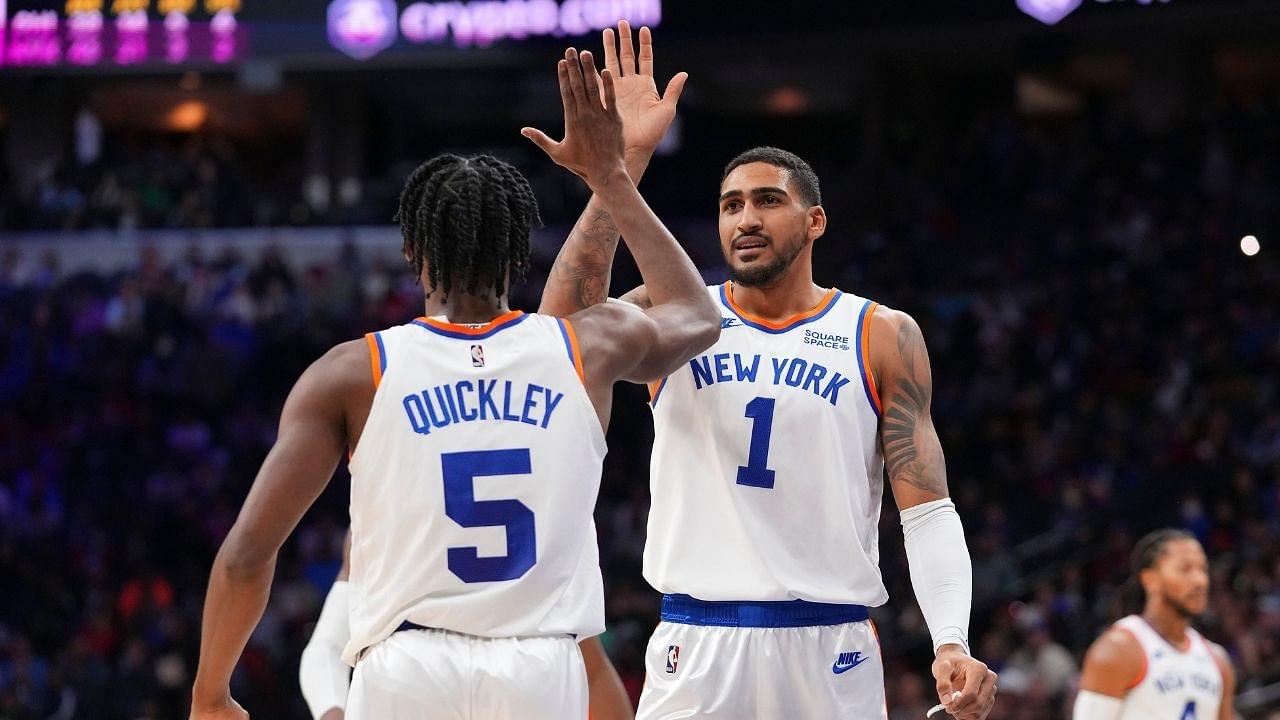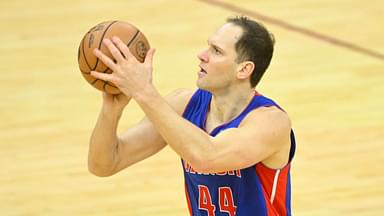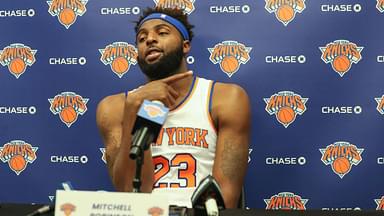The Knicks’ uneven start has been credit to a strange juxtaposition: a struggling starting five, and a dominant bench. For the team to make some real noise in the conference, the starters have to summon the same magic spells as their substitutes.
Advertisement
– Karan Madhok / @KaranMadhok1
It is a familiar sight nowadays for those of us that tune into League Pass for New York Knicks games. A competitive first half, followed by a disastrous third quarter, a heroic comeback, and then—too often—a night ending in disappointment. The disaster and the comeback usually correspond with the time that the Knicks starters and their backups take the floor, respectively.
Despite some early positive signs, the Knicks have been frustratingly uneven over the first month or so of the season. Much of it is attributed to a strange juxtaposition: The on-court plus-minus numbers for the team’s starting five ranks 23rd in the NBA (-3.7); the bench, meanwhile, is among the league’s best (+3.9), only behind the current best squad in the league, the Golden State Warriors.
Sometimes, basketball is extremely simple. If you have twelve players in your team, and you can only start five of them at the beginning of the game, you start with the five best ones. The best playmakers, the best swingmen, and best bigs. After all, the opposing team will be employing the exact same strategy, and there are few things more important than beginning a game the right way.
Except, it’s almost never that simple, is it? For every supposed rule about the starting lineup, there are a number of exceptions—and it these exceptions that keep the coaches working overtime, trying to devise the best lineups on the floor. Sometimes, a great player has to start on the bench behind a worse one, just to ensure that the starters have the correct balance of offense and defence. Sometimes, there are positional overlaps, and teams have to sacrifice good players from their starting five just to provide the spacing needed between the perimeter and post. Often, it isn’t the starting five that will be game-changing unit, but the one that the coach chooses to end games; the best recent example of this was the Warriors’ ‘Lineup of Death’, as the team chose to go smaller to finish games to run opponents off the floor.
How have the Knicks fared in these past weeks?
Just over a month into the 2021-22 NBA season, the Knicks’ bench is drastically outplaying their starting five. But with the starters—theoretically the team’s ‘best players’—getting the lion’s share of the minutes, the team is getting blown out by opponents.
Coach Tom Thibodeau favoured starting lineup—Kemba Walker, Evan Fournier, RJ Barrett, Julius Randle, and Mitchell Robinson—has been among the team’s worst five-man units so far. And yet, the team currently holds a winning record—11-9—thanks to the heroic efforts of their bench mob. The lineup of Derrick Rose, Immanuel Quickley, Alec Burks, Obi Toppin, and the choice of either Nerlens Noel or Taj Gibson in the middle has been particularly devastating for New York, using a mix of pace, energy, hustle, and shooting to help chart several big comebacks.
After last season’s tough first-round playoff loss, the Knicks top brass made it a mission this season to provide better offense and spacing to support their star player, Randle. Out went starters Elfrid Payton and Reggie Bullock, in came Walker and Fournier.
While the latter theoretically positioned the team to feature better shooting and pick-and-roll options offensively, their arrival came at the expense of the lineup that had helped make Coach Thibodeau’s into a defensive juggernaut.
With Walker and Fournier in the starting lineup, the Knicks have thus far struggled to stop their opponents. The bench, meanwhile, was always supposed to be an offensive injection, with little defensive excellence available—especially from the perimeter.
The result, then, has been that the team as a whole has been uncharacteristically weak on the defensive end, ranking only 17th at the time of writing in defensive rating.
The offense has been middle-of-the-pack, too (16th), not quite good enough to separate the Knicks from the crowded pack of contenders in the East.
The chemistry of the bench players has indeed been encouraging, particularly the development of second-year players Quickley and Toppin and the consistent performances of Rose. Along with Burks, these players have already provided heroic sparks off the bench, and have all become beloved by the home crowd at the Garden.
The pressure is all on the team’s ‘leaders’ that step out together for the opening tip every night. Their photos are printed largest on the pregame programmes, their names are flashed on the jumbotrons, boomed by the announcers, cheered on by the fans. And yet, the core of Randle, Barrett, Walker, Fournier and Robinson—when available—have to be much better if the Knicks hope to make any real noise in the conference.
Their performance and energy on both ends will be especially pertinent when the teams return from the tunnel after the halftime break, when these starters have too often fizzled out against opposing teams raging in the third quarters.
Randle and Barrett, in particular, must break out of their slump. After averaging 24.1 ppg on 45.6 percent shooting last season, Randle is down to 19.8 and only 42 percent of his shots made in 2021-22.
His efficiency from the three-point line has especially taken a nosedive. Similarly, Barrett, who promised a breakout last season with 17.6 ppg on 44.1 percent from the floor is only scoring 14.5 ppg so far this season on a 38.8 percent shooting clip. In the absence of Payton and Bullock in the starting lineup, the onus is further on Randle and Barrett to be the team’s defensive lynchpins as well.
We’re only about a quarter of the way into the new season, and the Knicks have ample time to correct course. The glass half-full perspective is that the bench mob have already discovered a special magic together; it is now up to the starters to learn the spell, too.
Big questions from around the NBA
– The league-best Warriors are in a special groove right now, nearly impossible to defeat, and riding high like they did during their spectacular run of five straight Finals. Stephen Curry is the MVP favourite so far, Draymond Green continues to serve reminders of why he’s considered one of the best defenders of this generation, Andrew Wiggins is enjoying the most consistent patch of his career, Jordan Poole has been a revelatory new force, and the young faces have settled in quicker than anyone could’ve imagined. With Klay Thompson and James Wiseman returning soon, could this squad reach the heights of Curry’s first championship season in 2014-15?
– The Lakers bulked up in the offseason with a number of big names, but so far, their 2021-22 campaign has been a disappointment. The team usually follows the high of an emotional victory with the lows of a sombre loss. Westbrook has struggled with his efficiency, Anthony Davis often seems to lack the tenacity on court to match his talent, and Lebron James—in year 19—is hardly available be a saviour every night. Perhaps all this team needs is some fortune of scheduling and health—but if they continue to meddle with a .500 record, is there a dramatic midseason trade in the outlook?
– This year’s rookie class is already providing a glimpse of future greatness. Number one pick Cade Cunningham started late, but has been dominant in his handful of appearances. OKC’s Josh Giddey is making magic for the Thunder’s backcourt. Scottie Barnes is going to be a freakish perimeter defender for years to come, Jalen Green may have the most athletic talent of them all, and Cleveland’s Evan Mobley—while injured right now—already has the poise of a veteran. Which contender will separate himself from the pack to become the Rookie of the Year?







